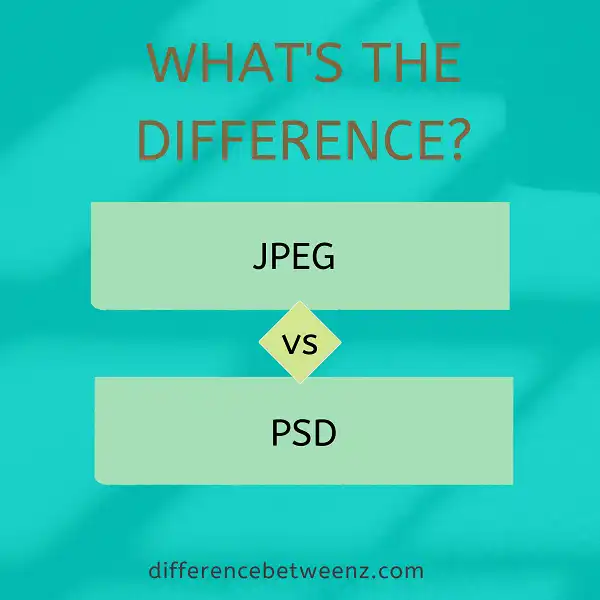What’s the difference between JPEG and PSD? In photography, a JPEG is a compressed file format while a PSD is an uncompressed file format. For most photographers, using JPEGs is more than adequate. However, for professional photographers or those who want to have more control over their images, using PSDs is the way to go. Let’s explore the differences between these two file formats in more detail.
What is JPEG?
JPEG is a standard for compressing images. JPEG stands for Joint Photographic Experts Group, the name of the group that created the standard. JPEG is used to compress photos and images for websites, email, and other digital uses. The JPEG format uses a lossy compression method, meaning that some image data is lost when the image is compressed.
This loss of data can result in JPEG artifacts, which are noticeable blocks or pixels in the image. JPEG compression can be applied to both color and black-and-white images. The JPEG format is also used to create digital photos and images for print. When printing JPEG images, it is important to use a high-quality JPEG setting to avoid visible JPEG artifacts in the printed image.
What is PSD?
PSD is an image file format that stands for Photoshop Document. PSD files are created in Adobe Photoshop and they allow for multiple layers and filters to be applied to images. PSD files also support transparency and are often used for web design and graphic design purposes. One advantage of PSD files is that they can be easily opened and edited in Photoshop. However, PSD files can also be opened in other image editing software, such as GIMP or Paint.NET. Another advantage of PSD files is that they are relatively small in size, making them easy to transfer and share.
Difference between JPEG and PSD
JPEG and PSD are two common image formats used by digital cameras and graphic design programs.
- JPEG (Joint Photographic Experts Group) is a lossy compression format meaning that some of the image data is lost when the file is compressed.
- JPEG compression is typically used for photographic images and allows for a wide range of compression ratios.
- PSD (Photoshop Document) is Adobe Photoshop’s native file format.
- PSD files are lossless, meaning no data is lost when the file is saved, however, PSD files are large due to the amount of data they contain.
- PSD files can also contain layers, transparency, and filters which give the user a lot of flexibility when editing the image.
JPEGs are ideal for images that will be displayed on the web or emailed as they are small in size and do not need to be edited further. PSDs are ideal for images that will be edited in Photoshop as they retain all of the data and allow for easy editing.
Conclusion
In conclusion, it is important to understand the difference between JPEG and PSD files when exporting images for use on the web. While JPEGs are often smaller in file size and can be used for general purposes, PSDs offer more editing options and can be saved as high-quality image files. When exporting your images, make sure to use the correct format so that you get the best results possible.


